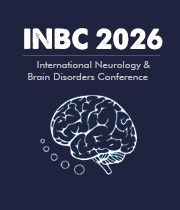Near infrared spectroscopy (NIRS)
Near infrared spectroscopy (NIRS) is a spectroscopic technique used to quantify and measure chemical components in compounds and materials. This technique exploits the principles of light absorption by molecules to identify and analyze wavelengths of light in the near infrared region of the spectrum. NIRS is used to measure, detect, and identify molecules and chemical compounds, such as proteins, sugars, lipids, and other organic materials. Compared to other analytical techniques, NIRS offers several advantages, including fast and non-destructive sample measurements, low detection limit of compounds, and a wide applications range. NIRS uses near infrared light to excite the molecule of interest, followed by that molecules characteristic absorption of light representing a unique identity. The wavelength and intensity of this absorption can then be measured and analyzed. NIRS uses the principle of Beer-Lambert law, which states that the amount of light absorbed is proportional to the concentration of molecules in the sample. The spectra produced from NIRS is used for qualitative, quantitative, and comparative analysis of the sample mixture. NIRS has several uses in a variety of different fields, such as medicine, material science, food, agriculture, and forensic science. NIRS has been used in medical research to examine the biochemistry of tissues and organisms. In material science, NIRS has been used to characterize the composition of polymers and other materials. In food science, it has been used to determine the quality of fruits, vegetables, and other food materials. In agriculture, it has been used to determine the moisture content and oil content of crop plants. Finally, in forensic science, NIRS has been used to analyze and compare unknown materials and substances. Overall, NIRS offers versatile applications in multiple areas and has become a valuable tool for researchers. It is a fast, non-destructive, and relatively simple technique that can be used for a wide variety of purposes. Therefore, NIRS continues to be an important method of spectroscopy in chemical, medical, and material research.

Joe Sam Robinson
Mercer University, United States
Robert B Slocum
University of Kentucky HealthCare, United States
George Diaz
Memorial Healthcare Systems, United States
Daniel Curry
Texas Children’s Hospital, United States
Zhenhuan Liu
Guangzhou University Chinese Medicine, China
Kiran Ghotra
Lake Erie College of Osteopathic Medicine, United States




Title : Atypical presentation of Juvenile myoclonic epilepsy in a 16-year-old female: A Case Report
George Diaz, Memorial Healthcare Systems, United States
Title : What we don’t know about hydrocephalus and It’s management
Daniel Curry, Texas Children’s Hospital, United States
Title : Artificial intelligence-driven DWI and FLAIR for the detection of early stroke changes: A systematic review
Shari L Guerra, The Medical City, Philippines
Title : Mapping neuroplasticity in occupational therapy: Evidence-based interventions with measurable neural outcomes
Jessica Marchant, Texas Woman's University, United States
Title : Non-pharmacologic management of orthostatic hypotension in inpatient rehabilitation: A quality improvement initiative
Laura Steakin, Rehabilitation Institute at Sinai, United States
Title : Non-pharmacologic management of orthostatic hypotension in inpatient rehabilitation: A quality improvement initiative
Mackenzie Weber, Rehabilitation Institute at Sinai, United States